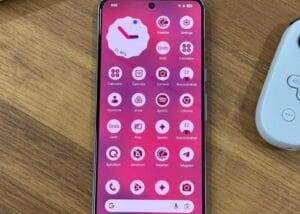
5G is the fifth generation of cellular technology which is promising fundamental advancements for industries, cities, and life. 5G different from previous generations, provides higher speed, lower latency, higher capacity, and the capability to allow more connected devices at the same time. Such synergies make it possible for smart applications in smart cities, health, industry, and other sectors.
Key Benefits of 5G Technology
Faster Speeds and Low Latency
5G also enjoys improved speed, which can go up to 20 Gbps, which is many folds higher than the 4G that has 100 Mbps. This enhancement helps stream appropriate and effective signals to other connected devices; thus, preliminary innovations, for real-time multimedia applications such as multimedia telepresence, motion picture streaming, and complicated M2M interconnectivity. The 5G can have a latency time of 1ms meaning the time taken for data to pass through the network. This responsiveness is all-important for such applications as self-driving cars; remote operations such as surgery; and advanced robotics where commands can be executed in near real-time, for safer and more efficient operations.
Higher Capacity and Device Density
That is five times greater than 4G where 5G can handle up to one million devices per square kilometer. This capacity is important for IoT to be realized in smart cities where devices such as traffic sensors, video surveillance cameras, and environmental sensors require continuous connectivity. This density also helps the industrial setting, where 5G’s speeds are useful for automation, remote operation, and massive sensor environments in production and distribution.
Enhanced Bandwidth for Diverse Use Cases
With its high bandwidth capabilities, 5G allows for the transfer of large volumes of data across three major frequency bands: low, mid, and high. Low bands are for coverage, the mid-bands are for range and speed, and the high-bands are for hyperspeed which is very important in areas such as stadiums and centrally located buildings. Due to this 5G can fulfill different requirements ranging from reliable mobile Internet connection to data-centered applications such as VR and AR.
Network Slicing for Customized Performance
5G has network slicing, which allows providers to replicate several different networks using only one physical one. Every slice can be tailored to particular uses, which means that key services, such as emergency alarms or industrial control and automation, will have top precedence. This makes 5G networks very flexible and secure for use, especially for sectors that need dedicated and high-performing network connections like the healthcare sector, transport, and the manufacturing industries.
Advancing Edge Computing and Industry 4.0
Edge computation and storage is another major area that 5G enables this is the processing of data within a point of procurement and not from centralized computing centers. This is particularly useful in industries that cannot delay the processing of results such as healthcare, manufacturing businesses, and emergency services. For instance, 5G connecting hospitals allows for tracking, in real-time, medical devices like insulin pumps and ventilators; while manufacturing industries get the analysis of data occurring at production lines to optimize productivity and quality.
Supporting Massive IoT and Energy Efficiency
But by design for IoT, 5G has the potential of supporting millions of such low-power devices with very low enabling energies, which have prolonged life span without the need for replacement of batteries. This capability is critical for applications such as telemonitoring and environmental sensing where devices may be required to perform in difficult-to-access zones or provide maximum lifetime on small energy storage. Further, 5G energy efficiency offers lower total power use and will remain environmentally friendly for both industries and cities.
Comparing 5G to 4G: Key Improvements
As 4G is still in deployment 5G comes with more improvements in speed, latency, and connection. This characteristic enables more numbers of devices to be connected with higher reliability and data speed making it possible for sectors such as manufacturing, healthcare, and transport sectors to incorporate more data-demanding applications that 4G cannot comfortably accommodate. Consequently, 5G is expected to emerge as the leading network, supporting such use cases as connected automobiles, intelligent industries, as well as ‘intelligent’ hospitals.
Real-World Applications of 5G
That means that the effects of 5G are already being witnessed across different industries. For instance, a Swedish mining firm cut the drilling costs through the use of 5G automation while a European Ford manufacturing plant employed high-impact 5G applications such as VR to boost production line. Healthcare: Hospitals can implement real-time tracking of equipment to attain better service responsiveness and more efficiency.
To the near future, 5G will enable advancements in technology that earlier seemed futuristic. Using augmented reality, instant remote communication or even 3D holography is gradually becoming possible with the help of 5G’s speed, bandwidth, and latency. When 5G networks spread around the world the technology will influence different spheres and change the world again.
Conclusion
Hence, there is the straightforward conclusion that the advantages of 5G include high speed, ultra-low latency, improved capacity, and last but not least the capability of network slicing. These features allow for transitions between different devices to be smooth, and to support smart, connected environments such as smart cities and autonomous systems, advancements to the mobile environment, as well as healthcare and industrial applications. As 5G technology evolves further, its benefits will rise to the power of exponential, and new skills from the industry and life will be drastically changed.








